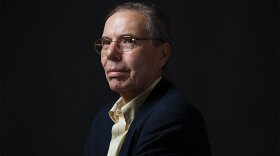-
C afé connects pet seekers with cats over coffee | C raving jollof and baobab? Calabash has you covered | C hefs serve up meals for a cause | Meet a…
-
Research suggests Nevada’s senior population could triple from 2000 to 2030. Some call it the silver tsunami. And among the many challenges this aging…
-
Southwest Medical Associates Hospice forged its mission during the AIDS crisis. The crisis is over, but the mission lives on — with hospice house calls that bring comfort to the dying.
-
Expert answers to common questions about end-of-life issues.
-
America is generally what Dr. Therese Rando, in her book, Grief, Death and Dying, terms a “death denying” society (as opposed to “death accepting” or “death-defying” societies).
© All Rights Reserved 2026 | Privacy Policy
Tax ID / EIN: 23-7441306
Tax ID / EIN: 23-7441306

Play Live Radio
Next Up:
0:00
0:00
Available On Air Stations
Supported by



